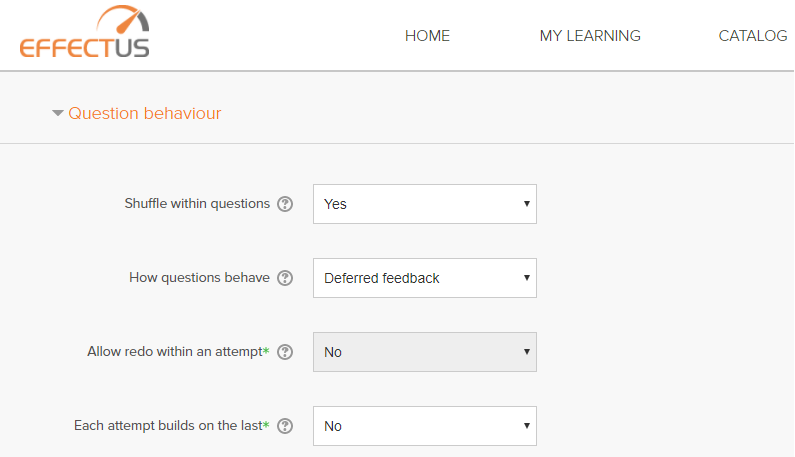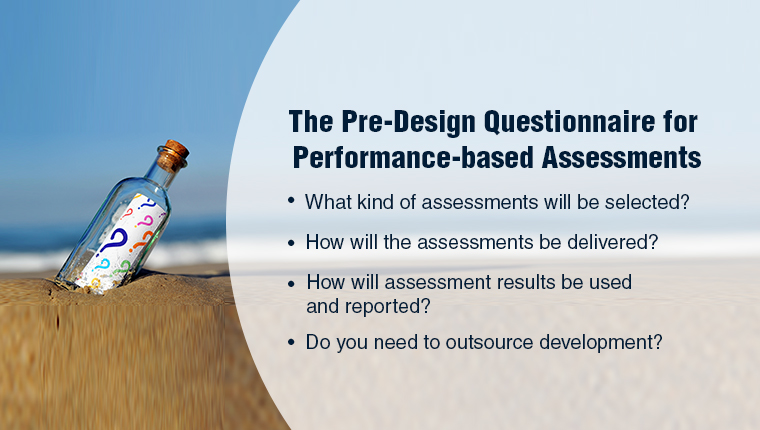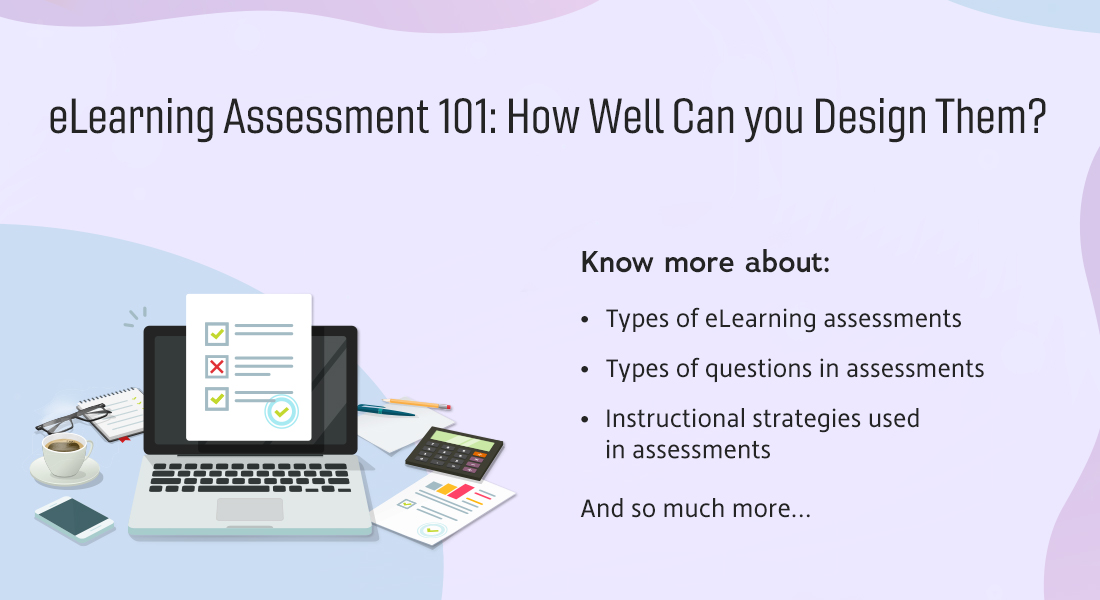7 Tips to Design Performance-based Assessments that Drive Learning
If designed correctly, performance-based assessments can drive learning and results. Here are seven tips to design effective performance-based assessments.

Assessments are an integral part of learning – be it online or in the classroom! By following a performance-based learning approach, you’re all set to develop the performance required to generate the desired business results. However, if you don’t include a performance-based assessment to evaluate your learners, you really don’t know if they are actually ready to apply what they’ve learned, on the job.
A Thumb Rule to Remember: Learning objectives are of primary
importance in deriving the right content, instructional strategies, and
assessments for your training program.
Even if you’re not directly involved in the instructional design of a training program, you might be required to validate the effectiveness of assessments. So, off we go!
7 Tips to Design Performance-based Assessments
- Align performance-based assessments with learning objectives
- Place emphasis on high frequency, difficult, and high-risk tasks
- Determine variations expected on the job
- Make the assessment realistic and relevant
- Keep the assessment streamlined
- Determine which objective will need the most assessment
- Create a question pool and randomize questions
Here are seven practical tips to design performance-based assessments.
Seven Tips to Design Effective Assessments
1. Align Performance-based Assessments with Learning Objectives
It is essential to carefully align each assessment with the structure of your learning objectives. Unfortunately, it’s easy to drift out of alignment; which, in turn, increases the uncertainty of how well individuals are able to apply what they have learned (performance) and decreases the overall effectiveness of your training program. You wouldn’t want your training programs to end up like the one depicted in the image below, would you?

Source : https://www.flickr.com/photos/teachandlearn/3792277913
Continuing with the same example of training call center reps, let’s say you have a scenario where an existing customer is calling to change their address. One of the learning objectives in the course is:
Using CRM software, change a customer’s address and ensure that there aren’t any spelling errors
In this learning objective, being able to change a customer’s address is the performance, the use of the CRM software is a condition, and entering data without spelling errors is part of the criteria.
If the assessment simply asks the learner to sequence the steps required to change a customer’s address, it would not be aligned with the learning objective because you aren’t testing whether they’re actually able to change a customer’s address using the software. Though in this case, you are enabling learners to identify the right sequence of steps to follow, you aren’t testing them at the application level, and the assessment has drifted out of alignment with the learning objective.
How can you improve this assessment and align it with the learning objective? Here’s a solution. Your performance-based assessment can include a scenario with a customer “calling in” to change their address. Include a simulation of the CRM software and ask the learners to actually change the address. If the entry has a spelling error, the learners are asked to attempt the address change again.
Notice how the entire structure of the assessment changes when you align it with the learning objective; taking into consideration the performance, conditions, and criteria. In this performance-based approach, you can make sure your assessment appropriately tests learners on the practical application of their knowledge and skills.
2. Place Emphasis on High Frequency, Difficult and High-Risk Tasks
When your training program includes learning objectives that focus on tasks that are performed frequently, are more difficult to learn, and/or not performing those tasks correctly poses a high risk, then your performance-based assessment needs to test learners on the same.
If we were to consider the same scenario mentioned above, let’s say we need call center reps to verify the Social Security Number (SSN) of the customer before logging the request. If the SSN is not properly verified, it can prove to be a risk because anyone else cannot be allowed to make changes to the customer’s contact address or phone number.
Your performance-based assessment should then include a scenario where the call center rep is asked to choose the first question they would ask the customer on receiving a call. Here’s a sample assessment question:
Which is the first question you would ask a customer when you receive a call?
Can you please ____________?
- Spell your name
- Verify your SSN
- Confirm your phone number
Notice how the assessment above takes care of testing learners on a high frequency, difficult, and high-risk task.
3. Determine Variations Expected on the Job
Performance-based assessments must be designed keeping in mind the variations expected on the job. Get some inspiration from Pareto’s Principle, or the 80/20 rule as it is popularly known as. Here’s an example to explain.
Call center reps are required to process claims and not all claims are exactly the same. Check with your stakeholder on the variations that can be expected. If there are 5 or 6 variations the call center reps have to process 80% of the time, train as well as test learners on identifying these common variations and processing these types of claims.
For the remaining 20% (outliers in claims processing), instruct learners to seek guidance or escalate the call to a supervisor depending on local practices.
Following this 80/20 rule in performance-based assessment design especially comes in handy when you’re designing training programs for new hires. Your training program could prepare learners for 80% of the claims they might encounter while for the remaining 20%, a performance support resource that gives them information on when and how to escalate the call would suffice.
4. Make the Performance-based Assessment Realistic and Relevant
By taking care not to drift away from the learning objectives, relevancy of assessments is taken care of. But you also have to make the assessment as realistic as possible so that learners see value in the assessment.
Consider the same example mentioned above. If the scenario-based assessment allowed call center reps to enter data (in this case, the address) with spelling errors and the assessment was marked correct, then we aren’t being realistic. While on the job, if employees are expected to enter data without spelling errors, the assessment too needs to ensure that erroneous data isn’t accepted.
5. Keep the Performance-based Assessment Streamlined
When you design a performance-based assessment, include the right amount of assessment items or actions that let learners demonstrate their knowledge and skills. For example, if one of the learning objectives in your training program is that call center reps will be able to add, edit, and modify data using the CRM software, then the course provides enough practice opportunities so that learners are comfortable performing these tasks in a simulated environment. Then, your assessment should test learners on those very skills to add, edit, and delete data using the CRM software.
If you have multiple assessment questions performing the same purpose, it would be better to eliminate the ones that are repetitive or redundant as one scenario-based activity might be sufficient to check learners’ proficiency on a specific learning objective. This is a good strategy to streamline assessments. By streamlining assessments, you receive:
- Reliable results from the assessment
- Effective instructional time
- Increased learner engagement
- Savings on budget (because you do not have multiple assessment questions with the same purpose).
6. Determine Which Objective Will Need the Most Assessment
Prioritize the learning objectives in your training program. For example, if your training program for call center reps has three learning objectives, of which objectives 1 and 2 are the most important for learners to apply on the job, then include more assessment questions that are aligned with those objectives. Perhaps you can have a lesser number of assessment questions for the 3rd objective.
By spending some time for this activity during assessment design, you can ensure the assessment provides more value to learners as it tests them thoroughly on the skills that are extremely essential on the job.
7. Create a Question Pool and Randomize Questions
It is a good idea to make use of a question pool and randomize questions while creating performance-based assessments (knowledge application questions, embedded decision gates, and actions). Considering the example mentioned earlier, let’s say call center reps have been unable to secure 90% marks which is the minimum expected from learners. If you were to allow learners a second attempt to pass the assessment, it wouldn’t make sense for the same set of questions to appear again.
Here’s when a question pool and question randomization come in handy. It tests learners on the same learning objectives, but the questions or scenarios are changed, and so is the order of appearance of questions.
Most LMSs have a built-in quiz engine that takes care of randomizing questions. The screenshot below shows how you can alter the assessment behavior by selecting relevant options via the LMS. Feedback is deferred until the learner completes the assessment and a reattempt is not allowed.

Wrapping Up
Hope you found these tips to design performance-based assessments useful. If you want employees to go through an effective performance-based learning program, do not give assessments a short shrift. Take a look at your existing training programs. Are the assessments aligned andcontributing to effective learning? If yes, that’s great. If not, then there’s always room for improvement. Perhaps you can identify what needs to be improved. With some careful thought and planning, it is possible to design assessments that actually drive learning and results.





